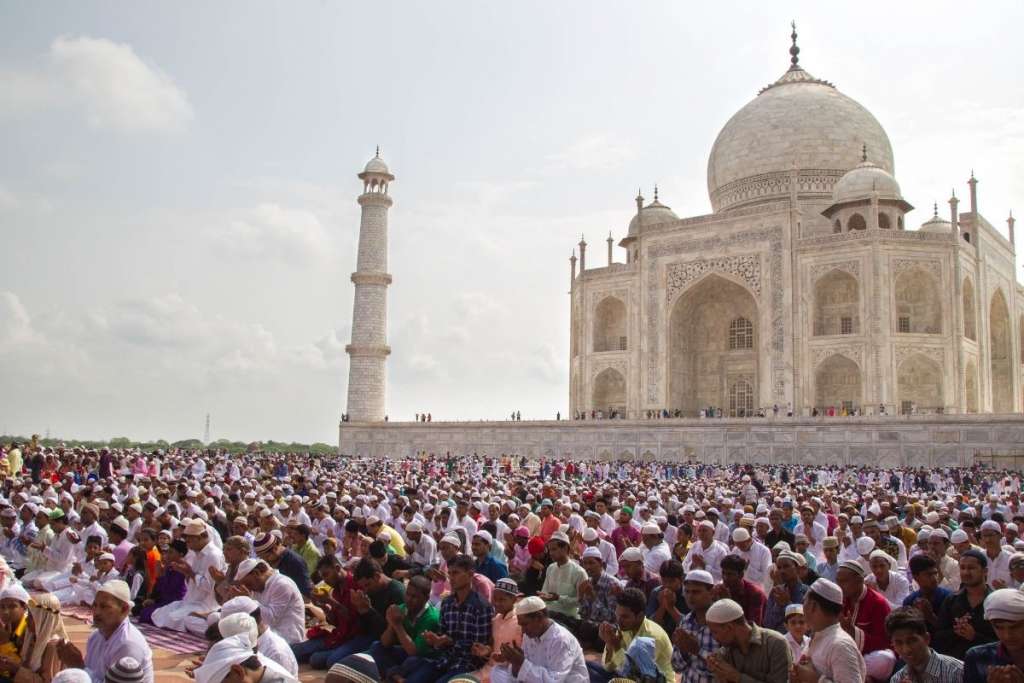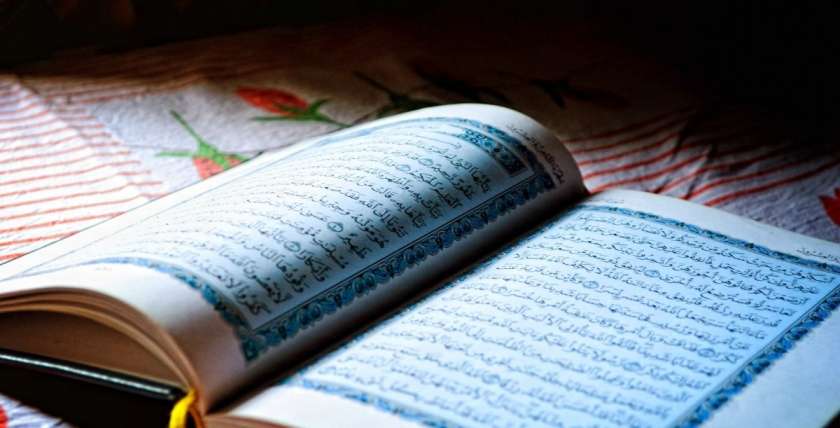In this article, we will tackle all you need to know about Eid al Fitr, and Eid day, so if you want to learn about them keep reading.
Is it haram to work on Eid day? No, it is not haram to work on Eid day, however, you should always keep in mind that Eid is for celebrating with your friends and family. Try to make the best out of your day, help the ones in need and have fun.
If you want to know what is Eid al-Fitr and Eid al-Adha, how to celebrate them then keep reading.
What is Eid?

Before we explain why is it haram to work on Eid day, let’s talk about what is Eid day and why is it so significant for Muslims around the world.
Eid meaning in English is “festival” or “feast”. In Islam, there are two major Eids which are Eid al-Fitr (Festival of Breaking Fast) which comes after Ramadan the month of reading the Quran and doing good deeds. Eid al-Fitr marks the end of Ramadan (the month of fasting) and it is the first three days of Shawwal (the 10th month of the Islamic calendar)
Then comes Eid al-Adha (Festival of Sacrifice). During this festival the Muslims that are capable of buying sheep, goats, camels, or cows to sacrifice, they do so. They buy what they can afford and divide the flesh of the animal among themselves, the poor, and friends and neighbors. Also, during this Eid people tend to visit their friends and family.
Eid al-Fitr is a three-day festival and there are many Eid gift ideas to celebrate it with your friends and family. The second Eid is Eid al-Adha which is the larger Eid, it is a four days festival.
How do Muslims celebrate Eid al-Fitr?
During Eid al-Fitr, people celebrate with each other by saying “Eid Mubarak,” meaning “Blessed Eid”. They tend to prepare sweet dishes at home like Maamoul, and cookies. Give candy and gifts to kids and the ones in need. Also, Muslims tend to seek forgiveness and Allah’s mercy.
The celebration of the Eid differs from one country to another. In high Muslim population countries, Eid al-Fitr is a national holiday. No work, or schools. People celebrate Eid with their family or friends.
Because Eid al-Fitr is so important, many Muslims believe that it is haram to work on eid day, but as we explained it is not haram to work on Eid day, but it is not exactly encouraged.
How do Muslims celebrate Eid al-Adha?
Eid al-Adha comes at the end of the Hajj (capable Muslims go to the holy city of Mecca in Saudi Arabia) to do the pilgrimage.
This Eid tells us the story of how Allah commanded the prophet, Ibrahim, to sacrifice his son Ismail to test his faith. And how Ibrahim informed his son Ismail. They both accepted Allah’s command and as Ibrahim was about to sacrifice his son, Allah intervenes and a ram is sacrificed in place of Ismail. So, during this Eid Muslims sacrifice animals in remembrance of this story.
How to prepare yourself for Eid prayer?

Before you go praying you should first prepare yourself, and here’s how to do so:
1- Sunnah of Eid ul Fitr:
One of the nights that no dua is rejected is the night before Eid, the prophet peace and blessing be upon him said:
‘There are five nights on which dua is not rejected: the first night of Rajab, the fifteenth night of Sha`ban, Thursday night, the night before Eid al-Fitr, and the night before Eid al-Nahr (al-Adha)’. (As-Suyuti).
Before you go to the Eid salat you should eat something, and it is a sunnah to eat an odd number of dates. As the prophet’s peace and blessing be upon him used to eat an odd number of dates before praying the Eid salat.
It is sunnah to take a shower and wear your best clothes before going to the eid prayer, and also to apply perfume.
2- Takbeer of eid ul fitr:
On your way to the salat recite the takbeer, which is: Allahu Akbar, Allahu Akbar. La ilaaha illa-llaah, wa-llaahu Akbar, Allahu Akbar, wa li-llaahil hamd.
This means “God is the Greatest, there is none worthy of worship besides God and to God belongs all praise”.
Also, you should know that there are no nafl prayers offered before or after the prayer. Abbas said, ‘The Prophet (saw) went out to the place of prayer on the Day of Fitr and prayed two Rakah of Eid prayer, not praying before or after them’. [Bukhari]
Make the niyyah (intention) before you start praying. The intention comes from the heart you don’t have to say it.
How to pray Eid prayer?
1- Make the niyyah (intention) before you start praying. The intention comes from the heart you don’t have to say it. Say the following: ‘I intend to pray two raka’ah of the Eid al-Fitr prayer for Allah.’ By doing so you prepare yourself mentally so that you can concentrate.
2- Now you don’t pray on your own, follow the imam. Even if you know how to perform the salah on your own you shouldn’t move or speak before the imam. You are not racing with the imam, so listen to him and follow his lead.
3- When the imam raises his hands and say “Allahu Akbar”, you should do the same. Then you will recite the al-Istiftah Dua. Afterwords the imam will say “Allahu Akbar” 3 times and you will repeat after him and raise your hands after each utterance. After raising your hands put them back down by your sides. “Allahu Akbar” means “The Lord is the most magnificent” or “Allah is the greatest.”. while al-Istiftah Dua is the dua that refers to starting the salah. There are multiple dua but here are one of them: غَيْرُكَ (Subhanaka Allahumma wa bihamdika wa tabarakasmuka, wa ta’ala jadduka wa la ilaha ghairuk).
4- Now put both your hands on your chest, place the right hand on top the left hand. The imam will now recite surah Al Fatiha and then a second Surah. The sunnah is to recite surah Al A’la in the first rakah. Listen to the imam carefully and try to focus.
5- When the imam finishes the surah he is reciting you will perform what is called Ruku, meaning that you will bow and place your hands on your knees and say “Subhaana rabiyal ‘adheem” three times.
Try to make your back parallel to the ground and look at the ground. Then when you hear the imam saying “Sami Allahu liman Hamidah”, stand up again and say “Rabbana lakal Hamd”, and they both mean “Allah hears those who praise him,” and “Our Lord, praise be to You.
6- Now when the imam says “Allahu Akbar.” You will go into sujud. You get onto your knees with your forehead touching the ground and say “Subhaana rabiyal a’la” three times. Then you will sit and do another sujud. And this is the end of the first rakah.
7- The imam will say “Allahu Akbar” and you will stand back up. Then the imam will recite surah Al Fatiha and another Surah. The sunnah is to recite Surah Al Ghashiyah in the second rakah. During this listen carefully and try to focus.
8- When the imam raises his hands and say “Allahu Akbar”, you should do the same. Then you will recite the al-Istiftah Dua. Afterwords the imam will say “Allahu Akbar” 3 times and you will repeat after him. Then go to ruku after the third “Allahu Akbar”. Now say “Subhaana rabiyal ‘adheem” three times. Try to make your back parallel to the ground and look at the ground. Then when you hear the imam saying “Sami Allahu liman Hamidah”, stand up again and say “Rabbana lakal Hamd”, and they both mean “Allah hears those who praise him,” and “Our Lord, praise be to You.
9- when the imam says “Allahu Akbar.” You will go into sujud. You get onto your knees with your forehead touching the ground and say “Subhaana rabiyal a’la” three times. Then you will sit and do another sujud.
10- When you finish the second sujud sit and say the Tashahhud
Tashahhud is recited in arabic as follows:
التَّحِيَّاتُ لِلَّهِ وَالصَّلَوَاتُ وَالطَّيِّبَاتُ السَّلَامُ عَلَى النَّبِيُّ وَرَحْمَةُ اللَّهِ وَبَرَكَاتُهُ السَّلَامُ عَلَيْنَا وَعَلَى عِبَادِ اللَّهِ الصَّالِحِين. أَشْهَدُ أَنْ لا إِلَهَ إِلَّا اللَّهُ وَأَشْهَدُ أَنَّ مُحَمَّدًا عَبْدُهُ وَرَسُولُهُ
اللَّهُمَّ صَلِّ عَلَى مُحَمَّدٍ وَعَلَى آلِ مُحَمَّدٍ كَمَا صَلَّيْتَ عَلَى إِبْرَاهِيمَ وَعَلَى آلِ إِبْرَاهِيمَ إِنَّكَ حَمِيدٌ مَجِيدٌ. اللَّهُمَّ بَارِكْ عَلَى مُحَمَّدٍ وَعَلَى آلِ مُحَمَّدٍ كَمَا بَارَكْتَ عَلَى إِبْرَاهِيمَ وَعَلَى آلِ إِبْرَاهِيمَ إِنَّكَ حَمِيدٌ مَجِيد
Attahiyyaatu lillaahi wassalawaatu wattayyibatu. Assalaamu ‘alayka ayyuhan-Nabiyyi warahmatullaahi wabarakaatuh. Assalaamu ‘alyna wa ‘ala ‘ibaadillaahis saaliheen. Ash-hadu an laa ilaaha illallaah wa ash-hadu anna Muhammadan ‘abduhu wa rasooluh.
Allaahumma salli ‘ala Muhammad wa ‘ala aali Muhammad kama sallaita ‘ala Ibraaheem wa ‘ala aali Ibraaheem innaka Hameedun Majeed, wabaarik ‘ala Muhammad wa ‘ala aali Muhamaad kama baarakta ‘ala Ibraaheem wa ‘ala aali Ibraaheem innaka Hameedun Majeed.
Meaning: “All the compliments are for Allah and all the prayers and all the good things (are for Allah). Peace be on you, O Prophet, and Allah’s mercy and blessings (are on you). And peace be on us and on the good (pious) worshipers of Allah. I testify that none has the right to be worshipped but Allah and that Muhammad is His slave and Apostle.
O Allah! Praise Muhammad, and on the family of Muhammad, as You Praised Ibraaheem, and the family of Ibraaheem; you are indeed Worthy of Praise, Full of Glory. And send blessings on Muhammad, and on the family of Muhammad, as you sent blessings on Ibraaheem, and the family of Ibraaheem; you are indeed Worthy of Praise, Full of Glory.”
11- When you finish the Tashahhud turn your face to the right and say “Assalamu alaikum wa Rahmatullah.” Then turn your face to the left and repeat the prayer again.
Now if you want to learn more about Islam then visit our website Quran online.






